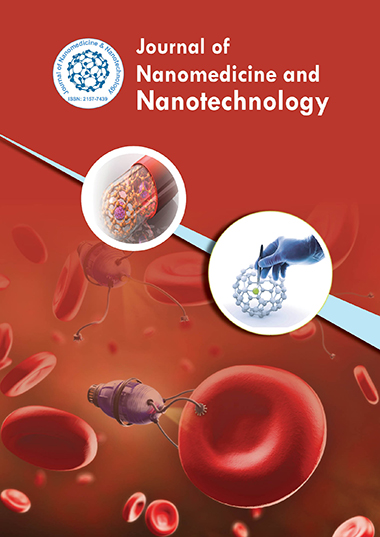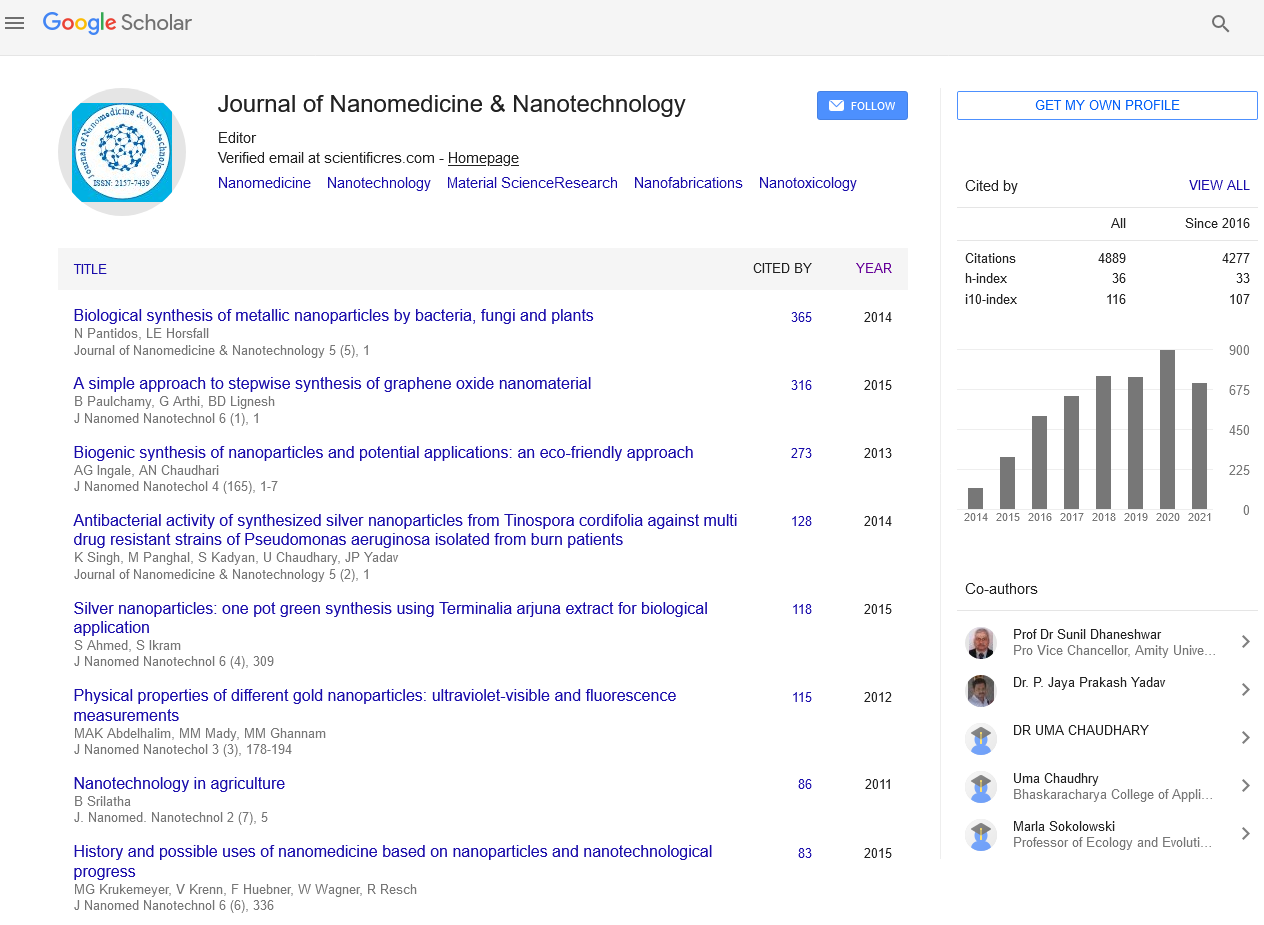Indexed In
- Open J Gate
- Genamics JournalSeek
- Academic Keys
- JournalTOCs
- ResearchBible
- China National Knowledge Infrastructure (CNKI)
- Scimago
- Ulrich's Periodicals Directory
- Electronic Journals Library
- RefSeek
- Hamdard University
- EBSCO A-Z
- OCLC- WorldCat
- SWB online catalog
- Virtual Library of Biology (vifabio)
- Publons
- MIAR
- Scientific Indexing Services (SIS)
- Euro Pub
- Google Scholar
Useful Links
Share This Page
Journal Flyer

Open Access Journals
- Agri and Aquaculture
- Biochemistry
- Bioinformatics & Systems Biology
- Business & Management
- Chemistry
- Clinical Sciences
- Engineering
- Food & Nutrition
- General Science
- Genetics & Molecular Biology
- Immunology & Microbiology
- Medical Sciences
- Neuroscience & Psychology
- Nursing & Health Care
- Pharmaceutical Sciences
In vitro cyto- and genotoxicology effects of graphene oxide in promyelocytic leukemia (NB4) human cells
11th International Conference and Expo on Nanoscience and Molecular Nanotechnology
October 20-22, 2016 Rome, Italy
I M M Paino, D Nakabayash, F Santos and V Zucolotto
University of São Paulo, São Carlos, Brazil
Posters & Accepted Abstracts: J Nanomed Nanotechnol
Abstract:
Introduction: Graphene oxide (GO) is a carbon nanomaterial that has been proposed for several important applications in health, such as cancer treatment. Activated cells are sources of reactive oxygen species (ROS) that may induce DNA damage and genomic instability, thus promoting an inflammatory response and cell injury. In this study, we investigated the in vitro cyto- and genotoxicology effects of GO in acute promyelocytic leukemia (NB4) human cells and ROS generation induced by GO. Methods: Cells were incubated at 37°C, 5% CO2 atmosphere in the presence of 0.1, 1.0, 12.0, 50.0 and 100.0 μgmL-1 of GO for 24 h. Cytotoxicity was measured by necrosis (fluorescein diacetate-FDA-test) and apoptosis assay (caspase-3 kit-BD-Biosciences, USA) by flow cytometry (FACSCalibur, BD-Biosciences, USA). Genotoxicity was analyzed by DNA fragmentation assay and ROS generation using the oxidation of 2,7-dichlorodihydrofluorescein diacetate (H2DCFDA-Sigma-Aldrich®, USA). All experiments were performed in triplicate. Data were submitted to one-way analysis of variance (ANOVA) and post-hoc Tukey test (p<0.05). Results: Significant responses to DNA fragmentation, necrosis and ROS generation were induced in NB4 cells at 1.0, 12.0, 50.0 and 100.0 μgmL-1 (p<0.05). Apoptosis was induced in all concentrations studied (p<0.05), except at 0.1 μgmL-1. Discussion/Conclusion: This study suggests that the mechanism underlying the toxicity of GO towards leukemia cells is due to elevated ROS generation, DNA damage and apoptosis process. Our results revealed that GO can interact with the cells, which opens the way for further studies on the toxicological effects of GO against human leukemia and cancer cells. A better understanding of the mechanisms related to elevated ROS generation, DNA damage, pro-inflammatory cytokines, inflammation, apoptosis and necrosis will lead to innovative approach for cancer treatment using GO nanomaterial.
Biography :
Email: iedammp@hotmail.com


